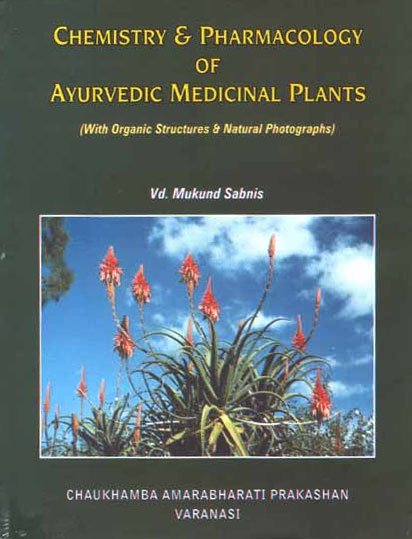Chemistry and Pharmacology of Ayurvedic Medicinal Plants
author: Mukund Sabnis
edition: 2006, Chaukhambha Amarbharati Prakashan
pages: 501
Topic: Ayurveda
Preface
Herbs are used in medicine since antiquity. Rigveda, one of the oldest Veda had quoted the use of plants in medicine. Much of the medicinal plants are documented in the age-old medical sciences like Ayurveda and Chinese system of medicine. Nearly five hundred plants of vegetable origin are documented in Charak and Sushrut Samhita. These herbs are still used successfully to treat different ailments. The use of the herbs solely depends on the basic theories brought up by ancient scholars. Number of pharmacological activities are attributed to these herbs. Quotations of wonder and miracle herbs are also found in literature. How- ever, these herbs require detailed taxonomical and pharmacological studies. Much diversity is seen in the described properties of the same plant, in different parts of country. Likewise, different plants are used under same name. People living in remote areas make use of these herbs in various disorders, which are still not documented. Thus, the observations made by these ancient people about the activities of these herbs must be scientifically tested. The results of clinical and pharmacological tests many a times do not match with the properties of herbs described by the Ayurvedic scholars. As a result, application of modern and scientific tests to herbs is a matter of question among the Ayurvedic practitioners.
Though Ayurvedic science does not recommend the use of isolated alkaloids or extracts, they play an important role in developing newer area of research in pharmacology. These extract or active components of herb serve as a marker to identify the right herb and the adulteration made in the plant. As herbal medicinal plants are being explored on scientific grounds, they are having good demand throughout the world. To meet this demand people have started cultivating medicinal plants. The place of cultivation, the time of collection, the age and stage of plant influences the medicinal property of the plant. The correct time of plucking, the place of cultivation can be assessed by estimating the proportion of active component in the plant. Due to better demand of medicinal herbs adulterations by vendors have also increased. Thus, phyto chemistry is gaining much importance in the field of standardization of herbal medicinal plants.
Practitioners of modern medical science are not aware of the pharmacological properties of medicinal plants. As a result, the use of medicinal plant is ignored by these people. The interpretations made by ancient Ayurvedic scholars about the pharmacological aspects of plants must be justified on modern scientific base. Hence, it is of great need to explore plants on biochemical grounds. This will gain good faith and acceptability of medicinal plants amongst the practitioners.
Main intention of this book is to get a compiled knowledge about the phytochemistry and pharmacology of frequently used herbs to Ayurvedic and non-Ayurvedic practitioners.
Newer topics like Introduction to Phyto chemicals, Free radical theory and Immunity are introduced which will help to develop contemporary information about medicinal herbs. For non Ayurvedic professionals introductory chapters of fundamental theories in Ayurveda are elaborated. Original references of the plants as per Ayurvedic texts are given that may help to compare with properties explored by modern research. A brief description of plant and their characteristics are mentioned which will give an idea about the structure of plant. A list of phyto chemicals of each medicinal plant is given along with the chemical structure of active ingredient that will help the reader to develop additional information about the plant. Detailed pharmacology and pharmacokinetics where ever possible is explained. Attempt has been made to present updated information regarding the plants. It is now acknowledged that herbs interact with one another and with synthetic drugs. The probable interactions are elucidated. Contraindications of herbs are explained which will help do avoid untoward effects and will facilitate to develop more precise treatment.
This book deals with fifty five medicinal and eight poisonous plants, which are routinely used in medicine. Number of research journals from all over the world are scanned to compile this book. Available literature about the medicinal plants is so huge and scattered that some important references might be missing. Suggestions regarding the current references are anticipated. As this is first edition of this book there may be some lacunae. Valuable suggestions from the readers will be obliged.
I am thankful to my teacher Dr.Shriram Savarikar Ex- Advisor (Ayurved) who gave his precious suggestions and encouraged me to complete this work. I am grateful to Dr. U.K. Halde Head, Drug testing laboratory Nanded who kept his library every time opened to collect references for this book.
My wife V d. Kanchan Sabnis every time inspired me in this work. She looked after the hospital kindlheartedly, which gave me spare time to execute this work. I am thankful to her.
Thanks to Shirish Hiswankar, Manjiri and Kranti for their help in preparing computerised print. Special thanks to Akshay who accompanied me while going through the laborious part of this work.
